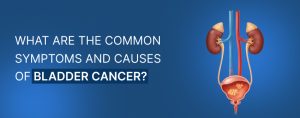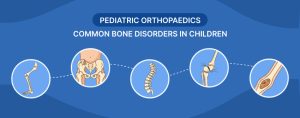Childbirth is a life-changing experience and choosing the right method of delivery is one of the most important decisions for expecting mothers. The two most common options are normal delivery vs c section, and the choice often depends on the mother’s health, the baby’s well-being and medical advice.
This blog explains both options with expert insights, helping parents understand what to expect so they feel informed and prepared.
What is Normal Delivery?
Normal delivery, also called vaginal birth, is the natural process of childbirth where the baby is delivered through the birth canal. It is usually the preferred option when there are no complications, as it supports faster recovery for the mother post delivery.
What is a C-Section (Cesarean Section)?
A C-section is a surgical procedure in which a baby is delivered through an incision made in the mother’s abdomen and uterus. Doctors may recommend a C-section in certain situations such as multiple pregnancies, breech presentation, placenta-related complications (e.g., placenta praevia), or when labor is not progressing normally.
Difference Between Normal Delivery and C-Section
| Basis of Difference | Normal Delivery | C-Section Delivery |
| Nature of Procedure | Natural, vaginal birth | Surgical procedure through abdomen and uterus |
| Pain Levels | Intense labour pain during birth, but usually less pain after delivery | Less pain during surgery due to anaesthesia but there can be post-surgery discomfort |
| Recovery Time | Quicker (2–4 weeks) | Longer (6–8 weeks) |
| Risks and Complications | Risk of tearing, prolonged labour | Risk of infection, blood clots, delayed healing |
| Impact on Future Pregnancies | Often supports natural delivery again | May require to repeat C-sections depending on health condition |
Pros and Cons of Each Delivery Method
Pros & Cons of Normal Delivery
Pros:
- Faster recovery and shorter hospital stay.
- Lower risk of surgical complications.
- Cost-effective compared to surgery.
Cons:
- Labour pain can be intense and prolonged.
- The process is unpredictable and may end in an emergency C-section.
Pros & Cons of C-Section
Pros:
- Planned and scheduled, reducing uncertainty.
- Less labour pain as anaesthesia is used.
- Life-saving in emergency situations.
Cons:
- Longer recovery period.
- Higher risk of surgical complications such as infection.
Recovery and Post-Delivery Experience
Normal Delivery Recovery
Recovery from a normal delivery is generally quicker. Most mothers resume daily activities within a few weeks. Mild discomfort, vaginal soreness or stitches (if tearing occurs) are common but manageable. Postpartum exercises and rest help in faster recovery.
C-Section Recovery
Recovery after a C-section can take longer, usually 4–6 weeks. Mothers need to care for the incision, avoid heavy lifting and manage limited mobility during the healing period. Fatigue and tenderness around the surgical area are expected and proper post-operative care is important.
Which is Better – Normal Delivery or C-Section?
There is no universal answer to whether normal delivery vs c section is better. The right choice depends on several factors including:
- The mother’s overall health.
- The baby’s position and development.
- Pregnancy-related complications.
Both methods have advantages and limitations. The safest option is the one recommended by a qualified gynaecologist after assessing the mother and baby’s condition.
Expert Advice from Venkateshwar Hospitals
At Venkateshwar Hospitals, the team of experienced gynaecologists and obstetricians guides mothers through the safest delivery method based on their health. With advanced facilities and compassionate support, the hospital ensures a positive and safe childbirth experience.
Conclusion
Understanding the differences between normal delivery vs c section helps expecting parents feel more prepared for childbirth. Both methods have unique benefits and challenges, and the decision should always be guided by medical advice and individual health needs.
At Venkateshwar Hospitals, expert doctors provide tailored recommendations and care, ensuring the best possible outcome for both mother and baby.
Frequently Asked Questions
1. Which is more painful: normal delivery or C-section?
Pain is experienced differently in each method. In a normal delivery, most of the pain occurs during labour and pushing. In a C-section, anaesthesia reduces pain during surgery, but recovery afterwards can be more painful due to the healing of the incision.
2. What is the difference between normal delivery and C-section?
A normal delivery is the natural process where the baby is born through the birth canal. A C-section is a surgical procedure where the baby is delivered through an incision in the abdomen and uterus. The main differences lie in the procedure, recovery time and risks involved.
3. Is normal delivery safer than C-section?
Normal delivery is often considered safe when there are no complications, as it avoids surgical risks. However, in high-risk pregnancies or emergencies, a C-section may be the safer choice for both mother and baby. The safest method depends on medical advice and individual circumstances.
4. What are the risks of C-section delivery for mother and baby?
For mothers, risks may include infection, blood clots, or delayed healing. For babies, there can be temporary breathing difficulties as they do not pass through the birth canal. These risks are usually well managed with proper medical care.
5. Which delivery method is better for the baby: normal delivery or C-section?
There is no single method that is always better. A normal delivery is usually beneficial for the baby when the pregnancy is uncomplicated. A C-section, on the other hand, can be better—and even life-saving—when complications arise or the baby’s safety is at risk.
6. What are the advantages of normal delivery compared to C-section?
Normal delivery usually has a shorter recovery period, fewer surgical risks, lower chances of infection and allows for immediate skin-to-skin contact with the baby.
Medically Reviewed by — Dr. Dipti K. Yadav ( Associate Director – Obstetrics & Gynaecology )














